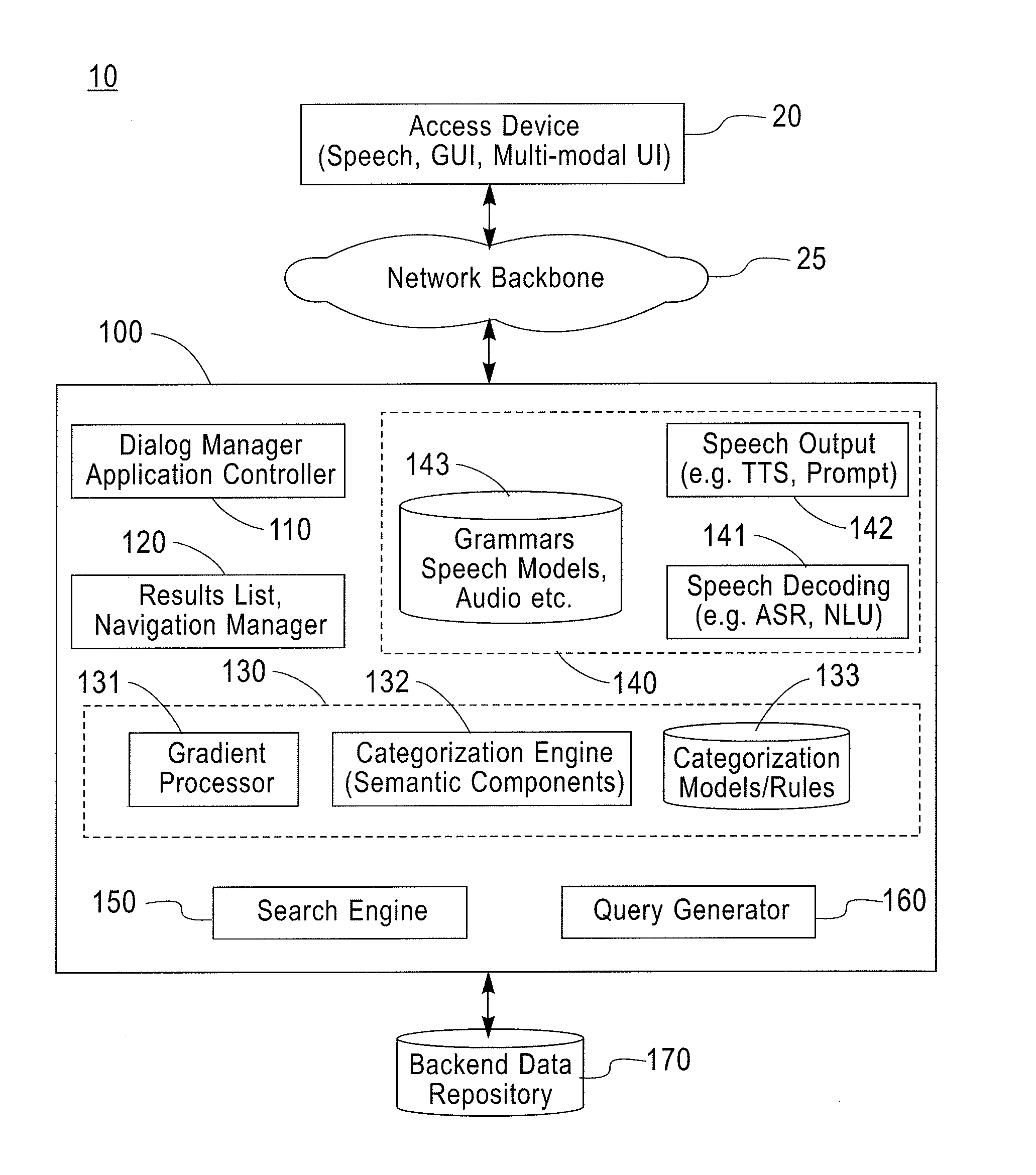Systems and methods for results list navigation using semantic componential-gradient processing techniques
a technology of componential gradient and results list, applied in the field of system and method for results list navigation using semantic componential gradient processing techniques, can solve the problems of lcd screens on mobile phones or pdas, practical limitations in the amount of information that can be presented, and cognitive limitations on a user's short term memory pose practical limitations on the quantity of information
- Summary
- Abstract
- Description
- Claims
- Application Information
AI Technical Summary
Benefits of technology
Problems solved by technology
Method used
Image
Examples
Embodiment Construction
[0020]Exemplary embodiments of systems and methods will now be described in further detail to illustrate the use of semantic componential-gradient techniques to manage and present large search results lists in a way that facilitates user navigation and selection of desired information. For illustrative purposes, exemplary results list navigation techniques will be described with reference to speech-based systems, where search results lists are dynamically organized into a gradable list of semantic components that is presented as spoken output as a constrained componential-gradient set of choices for user selection and navigation. The exemplary techniques are particularly advantageous in various user interface modalities (other than speech), for instance, in GUI where large search results lists are displayed on a screen with limited space (e.g., small LCD display of mobile phone or other portable computing device) or where a user may not be able to understand and decipher large lists...
PUM
 Login to View More
Login to View More Abstract
Description
Claims
Application Information
 Login to View More
Login to View More - R&D
- Intellectual Property
- Life Sciences
- Materials
- Tech Scout
- Unparalleled Data Quality
- Higher Quality Content
- 60% Fewer Hallucinations
Browse by: Latest US Patents, China's latest patents, Technical Efficacy Thesaurus, Application Domain, Technology Topic, Popular Technical Reports.
© 2025 PatSnap. All rights reserved.Legal|Privacy policy|Modern Slavery Act Transparency Statement|Sitemap|About US| Contact US: help@patsnap.com



